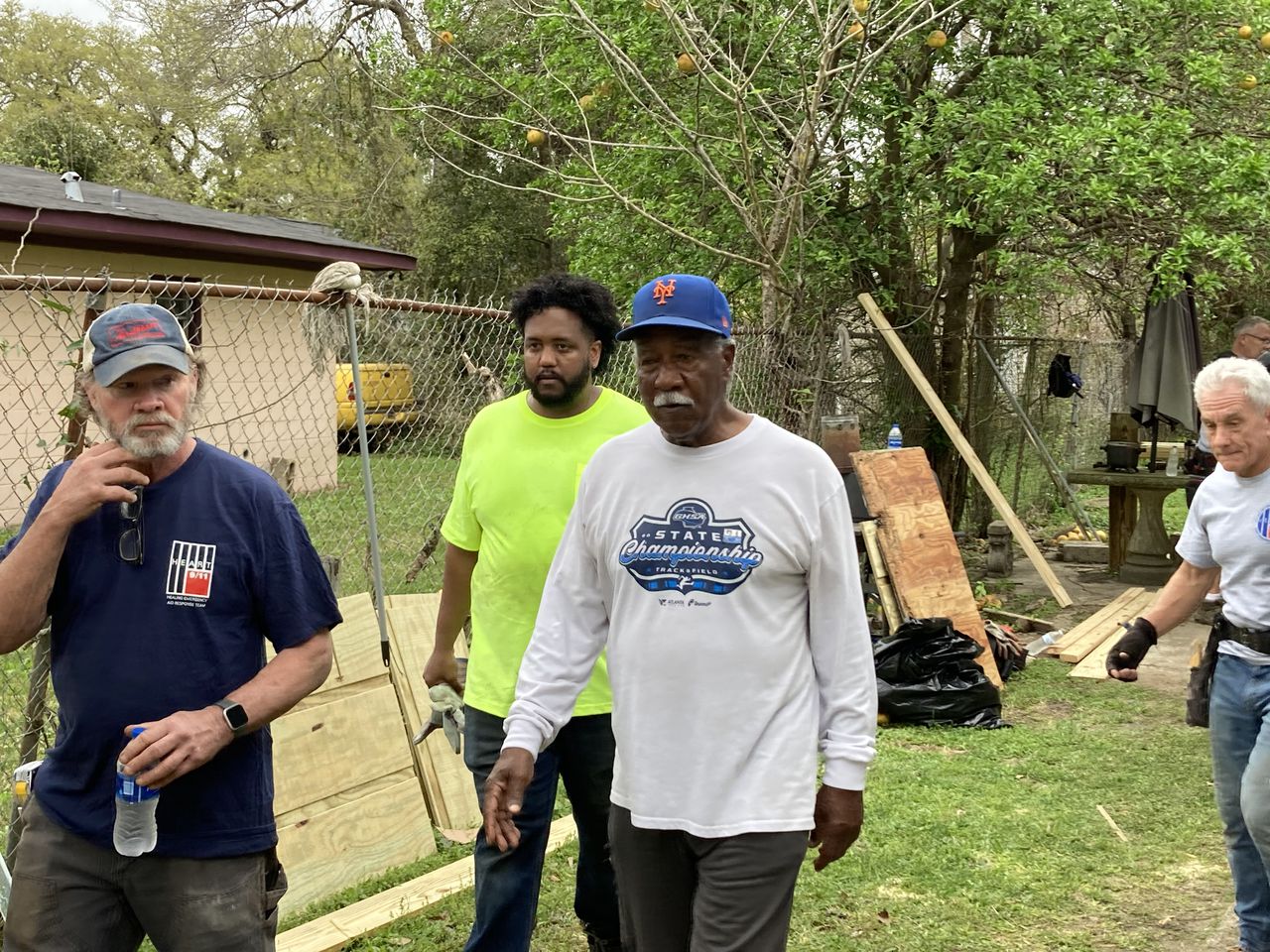Will Mobile strike out or hit home run with Hank Aaron home relocation?
Hank Aaron’s childhood home is headed back to its original neighborhood after the Mobile City Council voted unanimously Tuesday to have it relocated next to a police precinct and LeFlore High School.
But some of those close to Mobile baseball and its unique history say the home-turned-museum of the iconic slugger deserves a more prominent location other than on St. Stephen’s Road within the overwhelmingly Black Toulminville neighborhood. The location, they say, is far from the city’s downtown area where tourists are likely to come.
The council approved a $125,500 contract with a Mobile-based firm to have the home moved again.
Related stories:
It will be the second time the home has been moved in 15 years. Built in 1942, it was relocated from Toulminville to outside of Hank Aaron Stadium in 2008, and transformed into a museum that became a part of a gameday experience while the Class AA BayBears organization was operating until departing for Madison after the 2019 season.
“It is a very bad decision by the City Council,” said Joey Warner, author of books about Mobile’s connection with professional baseball. “Hank’s home needs to be moved to an area that is visible to help the museum.”
Joe Cuhaj, co-author of a 2004 book “Baseball in Mobile,” called the relocation a “missed opportunity for the city.”
“While I like the idea of the home being relocated near where he actually lived, the city is missing an excellent tourism opportunity,” he said.
Cleon Jones, an Africatown resident and a member of the New York Mets Hall of Fame, is on the site of a construction project on Tuesday, Feb. 28, 2023. A team from Heart 9/11, a non-profit that consists of a team of first responders who bonded in the aftermath of 9/11, is in the Africatown community of Mobile, Ala., helping renovate homes until Friday, March 3, 2023. The effort is backed by The Last Out Community Foundation, the non-profit formed by New York Mets Hall of Famer and Africatown resident Cleon Jones. (John Sharp/[email protected]).
Cleon Jones, a Mobile resident, and member of the New York Mets Hall of Fame said he would rather see the home relocated to a visible site in downtown Mobile near Cooper Riverside Park where statues of the city’s five homegrown Hall of Famers – including Aaron – will be erected within the coming year.
“Who is going to drive off the interstate to drive to Toulminville to see the museum?” Jones said. “It needs to be downtown where you have your activities and where you will have the (statues of the) Hall of Famers. We’ve been talking about this for two years now, and it should be downtown.”
‘Redeveloping area’
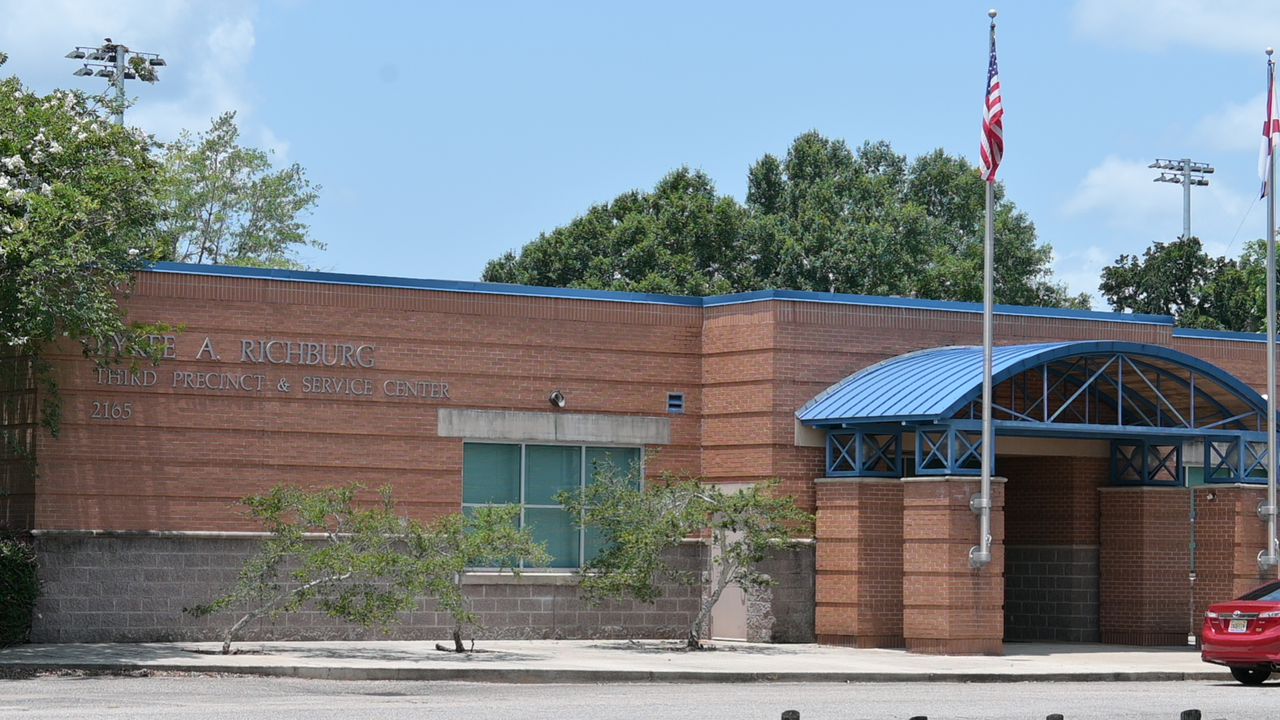
The exterior of a police precinct where the Hank Aaron childhood home will relocate sometime in the coming months after the Mobile City Council unanimously approved a $125,500 contract for the relocation on Tuesday, June 27, 2023. (John Sharp/[email protected]).
Council members say the new site is secured within a fenced area adjacent to a police station. It will also be next to a high school named after the late civil rights leader John L. LeFlore, and a community center named after the late Alabama State Senator Michael Figures.
“For us, we wanted to make sure it’s in a place (along) a main road, so people have an easy access to it,” said Councilman Cory Penn, who represents the Toulminville area. “We are redeveloping that area. It’s close to parks and the Michael Figures Community Center and LeFlore. You are creating this historic area within a one block area that will include Hank Aaron home, John L. LeFlore, and Michael Figures. That was our ultimate goal.”
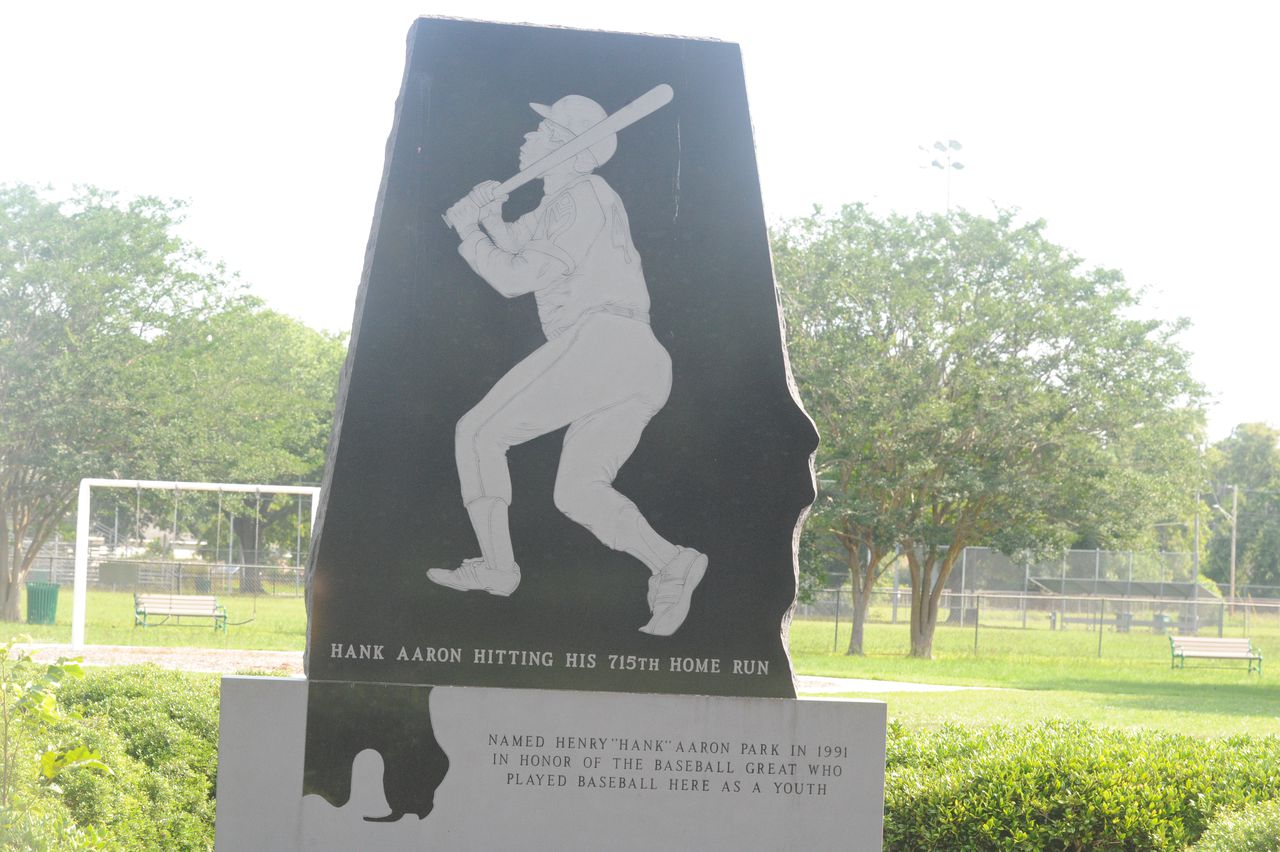
A concrete monument shaped into the state of Alabama bears Hank Aaron’s likeness at a Mobile city park that dates back to the 1940s. Henry “Hank” Aaron Park, formerly Carver Park, is located within the Toulminville neighborhood of Mobile, Ala., and is about two blocks from where Aaron’s childhood home once stood on Edwards Avenue. The park was renamed after the iconic Major League Baseball player in 1991. The monument was unveiled in 1999. (John Sharp/[email protected]).
The neighborhood also has other Aaron sites including little-known Henry “Hank” Aaron Park, formerly Carver Park. The park features an Aaron monument unveiled in 1999. It is located about two blocks from where the Aaron home stood on Edwards Avenue before its 2008 relocation.
Councilman William Carroll said it was good to have the home returned to its original neighborhood.
“It’s best to have the house back in the community,” Carroll said. “To know that the house is in the community where it originated, to me, is the best thing for it.”
It’s unclear when the city will have the house uprooted from its current location next to the McGowin Park shopping center off Interstate 65. Mobile-based JPayne Organization LLC was hired to undertake the move.
Penn and Carroll said Aaron’s sister, Alfredia Scott – wife of Georgia Democratic Congressman Mike Scott – was aware of the city’s plans. She could not be immediately reached for comment.
Penn said the city will begin working with the family and the Major League Baseball Hall of Fame in Cooperstown, N.Y., to discuss what kind of artifacts can be displayed within the home. The Baseball Hall of Fame had items removed from the home after the BayBears ended their tenure in Mobile. The BayBears played at the now-abandoned Hank Aaron Stadium from 1997-2019. The team has since been repackaged as the Rocket City Trash Pandas.
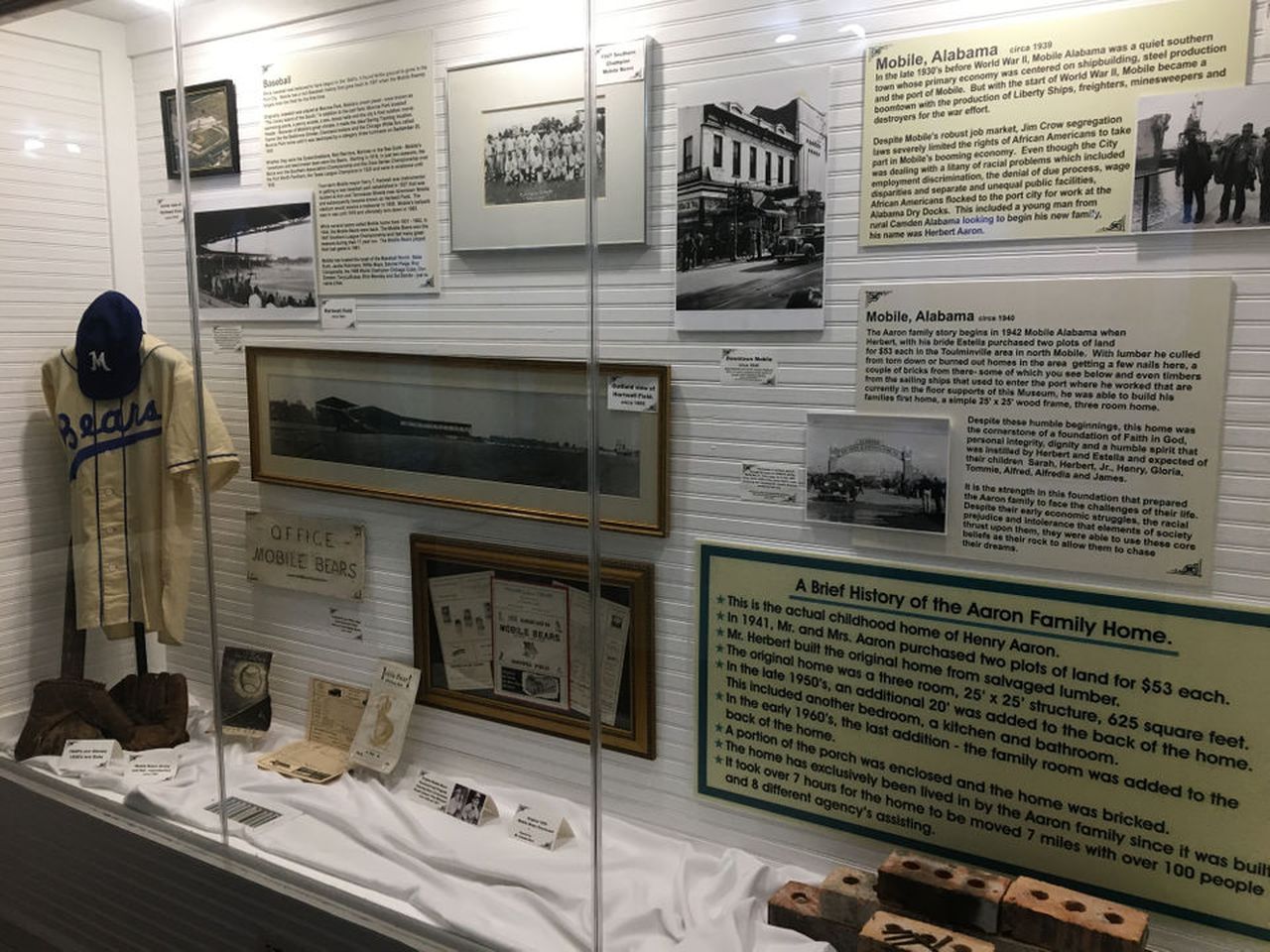
Hank Aaron’s childhood home and museum is located at Hank Aaron Stadium in Mobile, Ala. The home was moved from the Toulminville neighborhood of Mobile to the stadium in 2010. (John Sharp/[email protected])
The home-turned-museum, while operating, hosted a trove of artifacts from the Aaron family and the Hall of Fame. Key moments during Aaron’s illustrious baseball career were on display, dating back to the days in which he played semi-professional baseball in Mobile and during a brief stint with the Indianapolis Clowns of the Negro American League.
“Hank Aaron is probably our most famous sports hero,” said Danny Corte, executive director of the Mobile Sports Authority. “And to preserve his homestead, to me, is a very important step in preserving our Mobile sport’s history. After all, Hank Aaron is still the legitimate home run king in baseball. It’s important we continue to tell Hank Aaron’s story.”
While the museum was open, the voice of broadcast legend Milo Hamilton echoed throughout it with the call of Aaron’s 715th home run to break Babe Ruth’s record. Aaron, himself, was interviewed during an introductory video in which he talks about the challenges of growing up in segregated Mobile during the 1940s and 50s.
‘Tell that story’
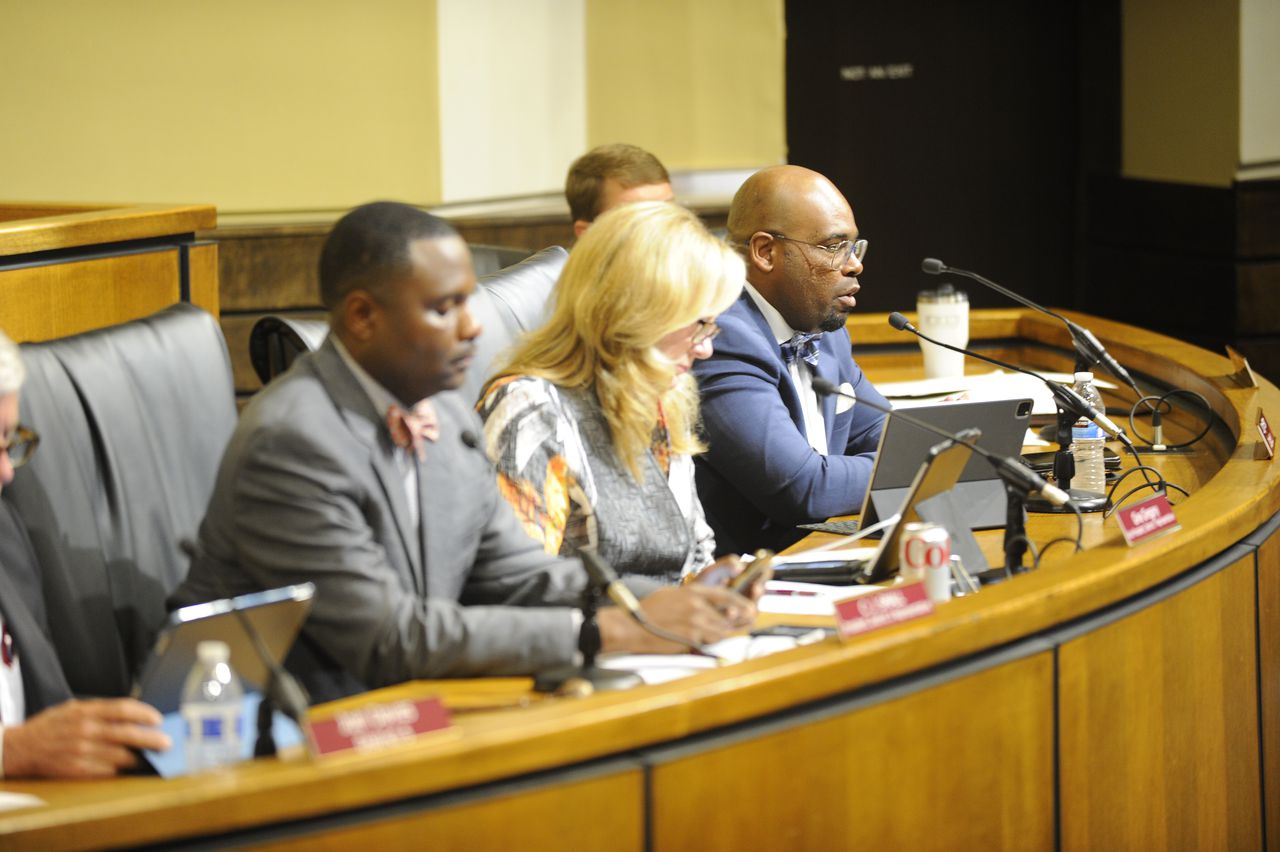
Mobile City Councilman Cory Penn (upper right) speaks during the council’s meeting on Tuesday, August 30, 2022. (John Sharp/[email protected]).
Penn admitted that the city will need to find ways to continue telling its connection to baseball history that includes an astonishing five homegrown members of the Hall of Fame – Aaron, Satchel Paige, Billy Williams, Willie McCovey, and Ozzie Smith. A host of other MLB standouts, including Jones and Tommie Agee – both outfielders on the 1969 “Miracle Mets” World Series champions – grew up playing baseball in Mobile.
“We have to figure out (how to promote the city’s baseball history) and one of the ways is to tell that story in the community and to get our kids to know about this,” Penn said. “That is the ultimate goal.”
The pressure to promote Mobile’s connection to the sport could also be magnified in the coming year as Major League Baseball begins preparations for hosting a baseball game next June between the St. Louis Cardinals and San Francisco Giants at historic Rickwood Field in Birmingham.
Related content:
“Mobile has some of the richest history there is in the continental United States (with Major League Baseball),” said Carroll.
Cuhaj said the home could better serve as an anchor to a baseball-related attraction. The city’s connection to having five homegrown MLB Hall of Famers makes it No. 3 in the U.S., trailing only New York City and Los Angeles.
Mobile is attempting to highlight that connection through a project that includes installing statues of the five Hall of Famers as part of a courtyard leading visitors into Cooper Riverside Park. That park is located on Water Street next to the Arthur R. Outlaw Mobile Convention Center and within a short walking distance of the city’s cruise terminal.
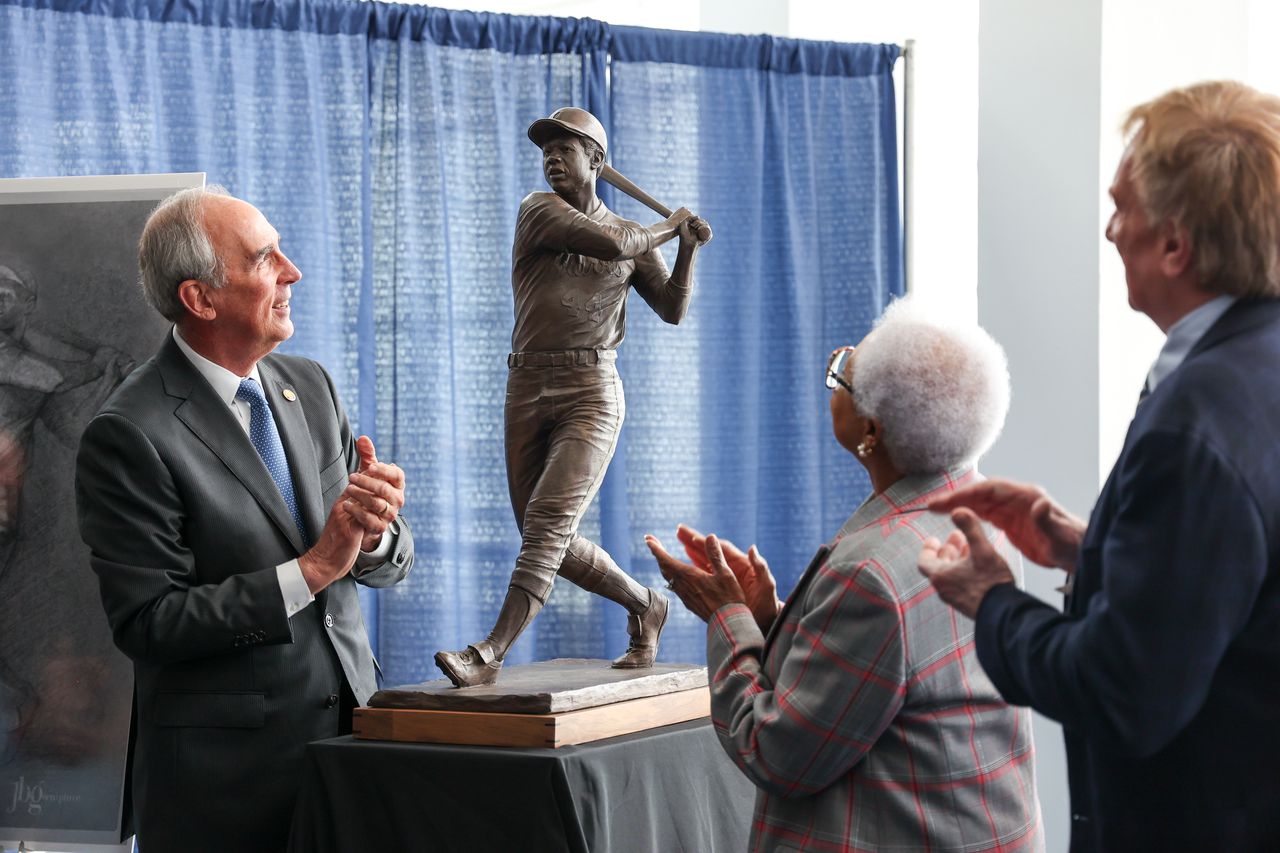
Mobile Mayor Sandy Stimpson, Billye Aaron, and Canfor president & CEO Don Kayne look up at a maquette of the Hank Aaron statue that will be placed at Cooper Riverside Park. The plans for the Hall of Fame Courtyard at the entrance to the park and next to the Arthur R. Outlaw Mobile Convention Center were unveiled during a ceremony on Tuesday, March 8, 2022, at the Convention Center in downtown Mobile, Ala. (photo supplied by Jason Johnson with the city of Mobile).
“Mobile is a stop along the I-10 corridor,” he said. “Visitors either stop by the city to just see what it’s about or visit its history in downtown or its restaurants. The city’s baseball history would seem, at least to me, a draw for more people downtown. I’m not sure how many tourists/visitors to the city will travel off the beaten path to Toulminville.”
Jones said one concern raised to him about having the home located next to the statues is the storm water surge that floods Water Street whenever tropical weather strikes Mobile. But Jones said the city could have elevated property to give the home a safer and more prominent site.
“If you’re putting the statues down there, then there is no better place to fit (the house) than downtown,” Jones said.
He also said the city could have built a park for the home.
Warner said he believes the home could capture tourism if the city would support an additional museum project filled with memorabilia from other homegrown professional athletes.
“The bronze statues that are supposed to be erected should surround these buildings,” Warner said. “There should be a staff of baseball people to maintain and promote these historic landmarks. I can visualize a steady flock of people visiting a Mobile Baseball and Sports Hall of Fame on a regular basis.”
He added, “Moving Hank Aaron’s home to Toulminville is a horrible mistake. After a few months, nobody will even know where the house is.”
